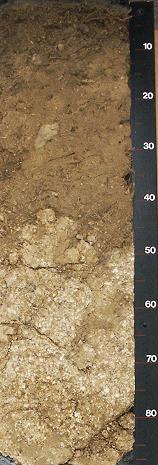Reference soil China 27: Cambisol
Cambisols occur mainly in the temperate and boreal regions of the world, where the soil’s parent material is still young or where low temperatures slow down the processes of soil formation.
Characteristics
Soils having either a cambic horizon (a horizon showing evidence of alteration with respect to the underlying material), or a mollic horizon overlying a subsoil, which has a base saturation of less than 50 percent in some part within 100 cm from the soil surface, or one of the following diagnostic horizons within the specified depth: an andic, vertic, or vitric horizon starting between 25 and 100 cm; a (petro-)plinthic or salic horizon starting between 50 and 100 cm, in absence of loamy sand or coarser textures above these horizons.
Reference soil CN027: Cambisols
PROFILE DESCRIPTION : Shallow, well drained, yellowish brown sandy clay loam derived from granite. The thin dark coloured topsoil has a very high organic carbon content and a moderately developed crumb structure. The soil is strongly acid throughout. GENERAL LANDFORM: the valley has a clear V-shaped form without any accumulation at the transition to the valley bottom / PARENT MATERIAL: within the rotten rock pockets of soil occur to a depth of about 150cm. The weathered granite is pinkish of colour / SLOPE PROCESSES: erosion (rill and gully) is evident along transport lines of cut timber / LAND USE: the flat bottom is intensively cultivated (paddy). Slide nos. of the ISRIC collection: 13905-13912 (landscape, profile, profile details)
